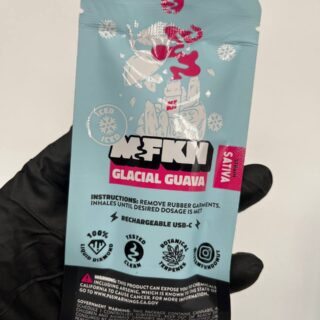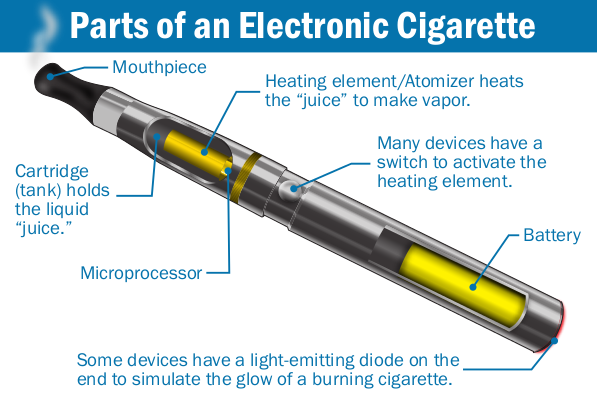Category
Most Popular
-
 ACE ULTRA PREMIUM 4G
Rated 1.00 out of 5$360.00 – $1,200.00
ACE ULTRA PREMIUM 4G
Rated 1.00 out of 5$360.00 – $1,200.00 -
 Baked Bars 2g
Baked Bars 2g
$23.00$18.00 -
 Big Chief 2g Melted Diamonds
Big Chief 2g Melted Diamonds
$25.00$20.00 -
 MFKN 2G disposable
$18.00
MFKN 2G disposable
$18.00
-
 Favorites 3g Disposable
$25.00
Favorites 3g Disposable
$25.00

5 facts you need to know about Electronic cigarettes and disposables
The National Institute on Drug Abuse (NIDA) provides a plain-language research summary that describes how e-cigarettes work, how safe they are compared to traditional cigarettes, and the potential health risks associated with vaping. Vaping devices are popular among teens and are now the most commonly used form of nicotine among youth in the United States.
Some research shows that many teens do not even realize that vaping cartridges contain nicotine, and assume the pods contain only flavoring. The easy availability of these devices, alluring advertisements, various e-liquid flavors, and the belief that they’re safer than cigarettes have helped make them appealing to this age group. Research so far suggests that vaping devices might be less harmful than combustible cigarettes when people who regularly smoke switch to them as a complete replacement. But nicotine in any form is a highly addictive drug. Research suggests it can even prime the brain’s reward system, putting vapers at risk for addiction to other drugs.
The Food and Drug Administration has alerted the public to thousands of reports of serious lung illnesses associated with vaping, including dozens of deaths.2 Truth Initiative provides facts, stats, and regulations related to e-cigarettes. E-cigarette use among young people has skyrocketed in recent years and remains at epidemic levels: about one in five high school students used e-cigarettes in 2020, many of whom were not smokers in the first place. The article discusses the different types of e-cigarettes, how much nicotine is in an e-cigarette, and whether e-cigarettes are less harmful than cigarettes.
The article also highlights the increase in disposable e-cigarettes among high school and middle school e-cigarette users.3 Johns Hopkins Medicine provides five vaping facts that everyone should know. The article discusses the rise of disposable products such as “puff bars” as vaping. The same CDC report says disposable e-cigarette use has increased 1,000% among high school students. Research from The Johns Hopkins University on vape ingredients published in October 2021 reveals thousands of chemical ingredients in vape products, most of which are not yet identified. Among those the team could identify were several potentially harmful substances, including caffeine, three chemicals never previously found in e-cigarettes, a pesticide and two flavorings linked with possible toxic effects and respiratory irritation. The article also discusses the potential health risks associated with vaping and nicotine addiction.4
Wikipedia provides an overview of electronic cigarettes, including their effectiveness for quitting smoking, safety concerns, and addiction. The article discusses the limited data about the safety of e-cigarettes and the variety of liquids used as carriers, which are present in the aerosol delivered to the user. The article also highlights the environmental issues around production, use, and disposal of e-cigarettes that use cartridges. The article concludes by discussing the support for e-cigarettes as a viable way to quit smoking in the UK.5 The Substance Abuse and Mental Health Services Administration (SAMHSA) provides information on reducing vaping among youth and young adults. The article discusses the different types of vaping devices, including disposable and rechargeable options, and the outcomes achieved through individual-level, school-level, and community-level interventions.
The article also highlights the importance of tax increases in reducing vaping among youth and young adults.6 Respiratory Research provides an updated overview of the impact of e-cigarettes on human health. The article discusses the potential respiratory effects of e-cigarettes and the risk of spilling, swallowing, or breathing when using devices with rechargeable refills. The article also highlights the controversy surrounding the use of e-cigarettes as a smoking cessation tool and the investigation of severe respiratory symptoms associated with the use of vaping products by the FDA and CDC.

The National Institute on Drug Abuse (NIDA) provides a research summary that describes the toxicology of e-cigarette constituents. The summary identifies a wide variety of chemical components in the cartridges, refill solutions, and aerosols of e-cigarettes. These substances include nicotine, solvent carriers (PG and glycerol), tobacco-specific nitrosamines (TSNAs), aldehydes, metals, volatile organic compounds (VOCs), phenolic compounds, polycyclic aromatic hydrocarbons (PAHs), flavorings, tobacco alkaloids, and drugs. Most reviewed studies have evaluated nicotine and impurities in the liquids such as TSNAs and nicotine-related impurities, while other studies have focused on identifying potentially harmful chemicals in the aerosol, such as carbonyl compounds, VOCs, TSNAs, metals, and more.
2 The National Institute on Drug Abuse (NIDA) provides a DrugFacts publication that describes cigarettes and other tobacco products. The publication explains that tobacco contains nicotine, an ingredient that can lead to addiction, which is why so many people who use tobacco find it difficult to quit. The publication also highlights the recent outbreak of lung illnesses associated with vaping and the warning from FDA officials against using any vaping products bought on the street.
3 The FDA provides information on e-cigarettes, vapes, and other electronic nicotine delivery systems (ENDS). The information explains that these products use an “e-liquid” that usually contains nicotine derived from tobacco, as well as flavorings, propylene glycol, vegetable glycerin, and other ingredients. The liquid is heated to create an aerosol that is inhaled. The information also highlights the legal responsibilities of vape shops that mix or prepare liquid nicotine or nicotine-containing e-liquids.
4 Better Health Channel provides information on the effects of smoking on the body. The information explains that along with nicotine, people who smoke inhale about 7,000 other chemicals in cigarette smoke. Many of these chemicals come from burning tobacco leaf. Some of these compounds are chemically active and trigger profound and damaging changes in the body. Tobacco smoke contains over 70 known cancer-causing chemicals. Smoking harms nearly every organ in the body, causing many diseases and reducing health in general.
5 A review published in the Journal of Analytical Science provides information on nicotine-containing electronic cigarettes. The review explains that nicotine is an alkaloid obtained from the dried leaves of the tobacco plant and acts as a natural botanical insecticide. Nicotine is highly toxic to humans and can cause addiction.
6 Health Canada provides information on the risks of vaping. The information explains that vaping nicotine can lead to physical dependence and addiction. Vaping can expose users to chemicals that can be harmful to their health


cigarettes
Written by admin
2 thoughts on “Electronic cigarettes and Disposable vaping”
Leave a Reply Cancel reply
Archives
| M | T | W | T | F | S | S |
|---|---|---|---|---|---|---|
| 1 | 2 | 3 | 4 | 5 | 6 | 7 |
| 8 | 9 | 10 | 11 | 12 | 13 | 14 |
| 15 | 16 | 17 | 18 | 19 | 20 | 21 |
| 22 | 23 | 24 | 25 | 26 | 27 | 28 |
| 29 | 30 | 31 | ||||
Best offers
Join Risk Free
30 days refund
100% Safe
Secure Shopping
24x7 Support
Online 24 hours
Best Offers
Grab Now
Free Shiping
On all order over
About Us

Vape Packs Dispo. Vape Packs Dispo is not just your regular online cannabis dispensary, but rather, an institution. Founded on the belief that every AMERICAN should have access to medical and recreational marijuana
Know More
I loved you even more than you’ll say here. The picture is nice and your writing is stylish, but you read it quickly. I think you should give it another chance soon. I’ll likely do that again and again if you keep this walk safe.
helloI like your writing very so much proportion we keep up a correspondence extra approximately your post on AOL I need an expert in this space to unravel my problem May be that is you Taking a look forward to see you